Port Felix is a small community in the Canadian province of Nova Scotia, located in the Municipality of the District of Guysborough in Guysborough County.
Port Felix is a small community in the Canadian province of Nova Scotia, located in the Municipality of the District of Guysborough in Guysborough County.
Surrounded by islands such as Goat of Burying Island, Potato Island, Sheep Island, Hog Island, Tanner Island and Ebber Island; it is situated on the eastern shore of Guysborough County, 22 km from Canso.
Up until 1869, Port Felix, Guysborough County, was originally known as Molasses Harbour. Early Acadian settlers named it because a keg of molasses washed up on shore. The early Acadian settlers arrived about 1797 from Chezzetcook, where they had been living since about 1758 after the fall of Louisbourg. Following the American Revolution, many Loyalists flocked to Nova Scotia, and the Acadian settlers were refused land grants in the Chezzetcook area, so many left that area, traveling down the eastern shore and settling in Molasses Harbour (Port Felix), Charlos Cove and Larry's River. Port Felix is scenic, with its harbour and rugged coastline.

Canso is a community in Guysborough County, on the north-eastern tip of mainland Nova Scotia, Canada, next to Chedabucto Bay. In January 2012, it ceased to be a separate town and as of July 2012 was amalgamated into the Municipality of the District of Guysborough.
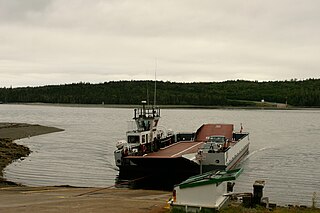
Country Harbour is a rural community in Guysborough County, Nova Scotia, Canada. The community is situated on a large deep natural harbour of the same name and is located along the province's Eastern Shore close to Canso, Nova Scotia.
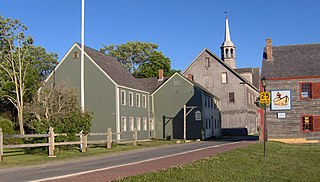
Shelburne is a town located in southwestern Nova Scotia, Canada.
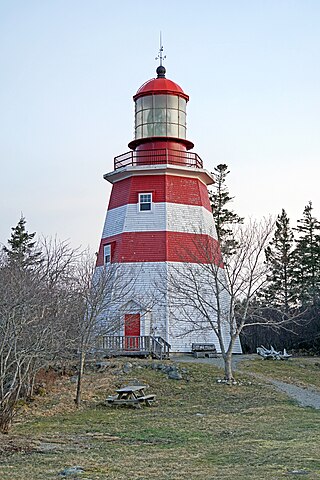
Barrington, officially named the Municipality of the District of Barrington, is a district municipality in western Shelburne County, Nova Scotia, Canada. Statistics Canada classifies the district municipality as a municipal district.
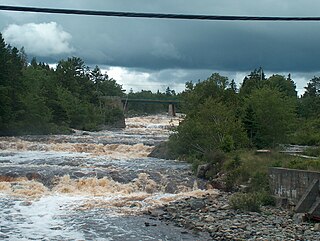
The Eastern Shore is a region of the Canadian province of Nova Scotia. It is the Atlantic coast running northeast from Halifax Harbour to the eastern end of the peninsula at the Strait of Canso.
The Marine Drive is a designated scenic route along Nova Scotia's Eastern Shore. It closely follows the coast of the Atlantic Ocean and the Strait of Canso from the Canso Causeway to the junction of Route 322 and Highway 111 in Dartmouth.

Guysborough is an unincorporated Canadian community in Guysborough County, Nova Scotia.
Head of Chezzetcook is a rural community on the Eastern Shore Marine Drive route of Halifax Regional Municipality in Nova Scotia. The Head of Chezzetcook area begins at the intersections of routes 7 and 207, near Porters Lake and West Chezzetcook, and continues along the Marine Drive to Gaetz Brook. Head of Chezzetcook is a short commute to Downtown Halifax at 29.52 kilometers; and in its heyday was a major port of call for ships delivering supplies from the city to local gold miners and early settlers. A vista of the sea marks the Head of Chezzetcook Inlet, for which the Chezzetcooks are named; and a fork in the road for both East Chezzetcook and Conrod Settlement.
Wine Harbour is a community located in Guysborough County along the Eastern Shore of Nova Scotia.

Pomquet is a small Acadian village in Antigonish County, Nova Scotia, Canada.
Grand Désert is a small Acadian community of the Halifax Regional Municipality in the Canadian province of Nova Scotia on Route 207 situated between West Chezzetcook and Seaforth. It is one of the five villages located along the Chezzetcook Inlet. The name of the community came from the Acadian word Désert meaning "land of no trees". The population in 2003 was 315.
Scotch Village is an unincorporated community on the Kennetcook River in the Canadian province of Nova Scotia, located in the Municipality of West Hants. This area was part of Newport Township at the time of settlement primarily by Rhode Island Planters in the early 1760s. It was referred to as “Scotchman’s Dyke” or “Scotch Village”, due to settlement of early families of Scottish descent. Prior to the arrival of the Planters, Scotch Village had been the home of Mi'kmaq and Acadians.
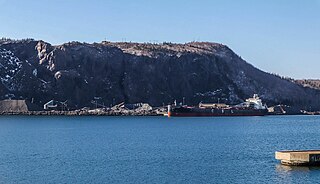
Aulds Cove is a community in the Canadian province of Nova Scotia, located in both Antigonish County and Guysborough County.
Larry's River is a small Acadian community in the Canadian province of Nova Scotia, located in the Municipality of the District of Guysborough in Guysborough County. The community is named after one of its settlers, Larry Keating. Settlers arrived from Chezzetcook soon after the expulsion ended in 1763.
Pirate Harbour is a small community in the Canadian province of Nova Scotia, located in the Municipality of the District of Guysborough in Guysborough County. It is located just south of Mulgrave, Nova Scotia, on the west side of the Strait of Canso. The Mi'kmaq name for the place was Tesogwode, "the place where goods were sorted." The name Pirate Harbour was allegedly given because the space between the small island and the cove provided safe anchorage and a hiding place for pirates such as Captain Kidd and Paul Jones. A settlement was established in 1785, and early settlers included John Wilson and John Peeples, who each received a thousand-acre grant there in 1785.
Charlos Cove is a small Acadian community in the Canadian province of Nova Scotia, located in the Municipality of the District of Guysborough in Guysborough County.Charlos Cove is a fishing community. In 1760 the first Acadian settlers, came to Charlos Cove. St. Joseph's Roman Catholic Church built in 1876 is the centre of the community. In 1879 the first school house was built. In 1920 a two-room school was built which today is the parish hall.
Lower River Inhabitants is a small community in the Canadian province of Nova Scotia, located in Richmond County in Cape Breton Island. The River Inhabitants is born out of tributaries from the hills of Kingsville, Inverness County. These tributaries join to first form two branches of the River Inhabitants in Kingsville, which join together at Princeville, Inverness County. The main river then flows down through the communities of Princeville, Riverside, Cleveland, Grantville, Hureauville, and Lower River Inhabitants/Evanston to join Inhabitants Bay, known locally as Basin Inhabitants or Whiteside Basin. Port Hawkesbury is the market town of Lower River Inhabitants communities.
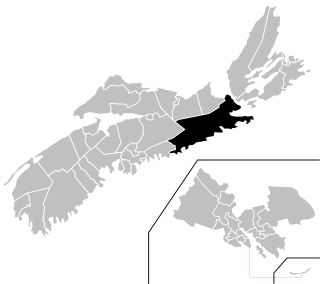
Guysborough-Tracadie is a provincial electoral district in Nova Scotia, Canada, that elects one member of the Nova Scotia House of Assembly.
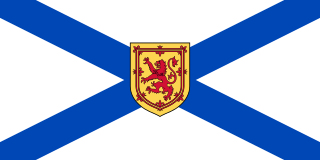
The following outline is provided as an overview of and topical guide to Nova Scotia:

The Eastern Shore is a tourism region of the province of Nova Scotia, Canada. It provides two percent of the revenue for the province's tourism economy. One of its key features is an archipelago known as the 100 Wild Islands area.
45°14′57.59″N61°13′5.6″W / 45.2493306°N 61.218222°W "Guysborough County History": https://web.archive.org/web/20091023141942/http://geocities.com/Heartland/Acres/6783/HISTORY.HTM).